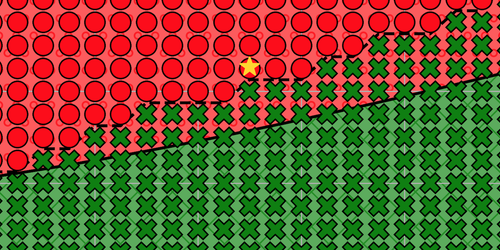Fault-Tolerant Quantum Error Correction without Measurements
Quantum computers owe their prowess to the often fragile and fleeting quantum properties of their quantum building blocks (qubits). Sustaining the quantum properties of a set of qubits in the face of stray electric fields, temperature fluctuations, and other sources of noise is so challenging that errors caused by decoherence are inevitable. Therefore, most quantum computers, in the lab or on paper, incorporate mechanisms for identifying and correcting errors as they occur. Now Sascha Heußen and his collaborators from RWTH Aachen University and Forschungszentrum Jülich, both in Germany, have devised an error-correction recipe that avoids the often used but time-consuming step of measuring qubits to check if they have gone awry [1]. If realized, the recipe could result in faster, more accurate error correction in quantum computers.
Directly measuring a data qubit would destroy its quantum properties. Traditional error-correction schemes avoid that outcome by performing so-called syndrome measurements on ancillary qubits that contain copies of any data-qubit errors. These measurements stop short of determining the full state of a qubit but provide enough information that researchers can infer its state. If necessary, this information can then be used to trigger corrections to the data qubits.
Obtaining a qubit’s state via syndrome measurements can be a slow and painstaking procedure. In simulations, Heußen and his collaborators avoid that issue by making multiple copies of the syndrome information. Channeling that information through hardcoded feedback operations, one for each copy, the team shows that they can achieve fault tolerant error correction without measurements. The simulation results also suggest that this recipe is faster and more effective than existing schemes within a certain regime of physical error parameters. Heußen says this method could work on any qubit type.
–Charles Day
Charles Day is a Senior Editor for Physics Magazine.
References
- S. Heußen et al., “Measurement-free fault-tolerant quantum error correction in near-term devices,” PRX Quantum 5, 010333 (2024).




